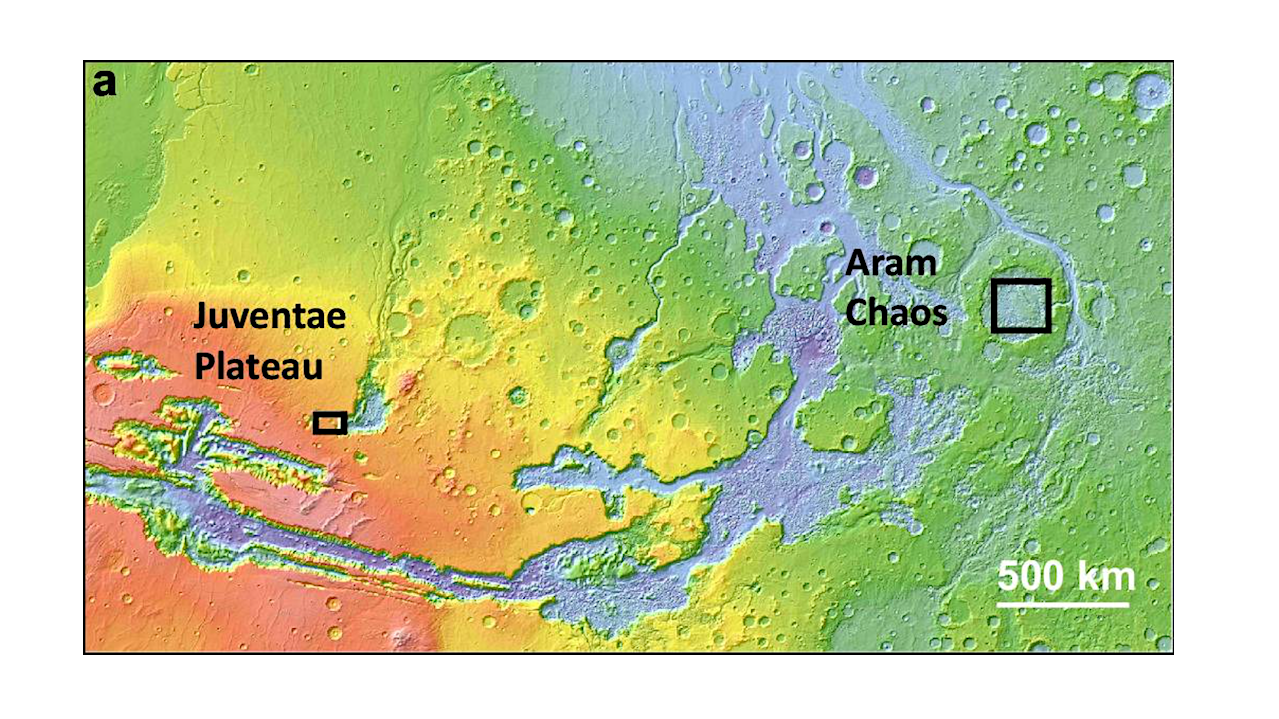Research has revealed significant new insights into the geochemical environment of Mars, specifically regarding the mineral ferric hydroxysulfate (Fe3+SO4OH). This intriguing Fe-sulfate phase has garnered the attention of scientists for over a decade due to its unique spectral characteristics and its presence in layered sedimentary rocks on the Martian surface.
The detection of ferric hydroxysulfate has profound implications for understanding the planet’s geological history. This mineral is formed when hydrous Fe2+ sulfates are heated to temperatures of at least 100 °C. It exhibits a distinct spectral band at 2.236 μm, which closely resembles the spectral features found in areas such as Aram Chaos and the plateau above Juventae Chasma. These findings suggest that the hydrated sulfates in these locations likely originated through processes involving evaporation or low-temperature alterations.
Formation Processes and Geological Implications
In contrast to the origins of hydrated sulfates, the presence of ferric hydroxysulfate is more indicative of heating and oxidative processes affecting hydrated ferrous sulfates. These processes might have occurred due to volcanic activity, ash deposition, or hydrothermal interactions. The study emphasizes that understanding these minerals provides crucial insights into Mars’ geochemical environment and its historical climatic conditions.
The research utilized data from the Mars Orbital LASER Altimeter (MOLA), which mapped the equatorial regions of Mars, highlighting significant locations. Notably, the Juventae Plateau and Aram Chaos are marked on the map, illustrating variations in elevation with red indicating higher altitudes and blue representing lower regions.
Additionally, analyses from the Compact Reconnaissance Imaging Spectrometer for Mars (CRISM) provided compositional data over high-resolution stereo camera models. These images reveal pyroxene-bearing basalt formations, polyhydrated sulfates, and the distinctive Fe3+SO4OH-bearing phase, which is illustrated in various spectral comparisons.
Significance for Martian Exploration
The discovery of ferric hydroxysulfate on Mars not only adds to the mineralogical inventory of the planet but also raises questions regarding water activity and environmental conditions in Mars’ past. As scientists continue to unravel the geochemical complexities of the Martian surface, each finding contributes to a larger narrative about the planet’s capacity to support life.
According to research published in Nature, the implications of this study extend beyond mere mineral classification. They point to a dynamic geochemical history that includes both liquid water and geological processes capable of transforming the Martian landscape. Understanding these processes is vital for future exploration missions aimed at assessing the potential for past or present life on Mars.
This ongoing research demonstrates the importance of mineralogical studies in reconstructing the geological history of Mars and refining our understanding of planetary evolution in general. As investigations continue, ferric hydroxysulfate may hold the key to unlocking further secrets of the Red Planet.







































































